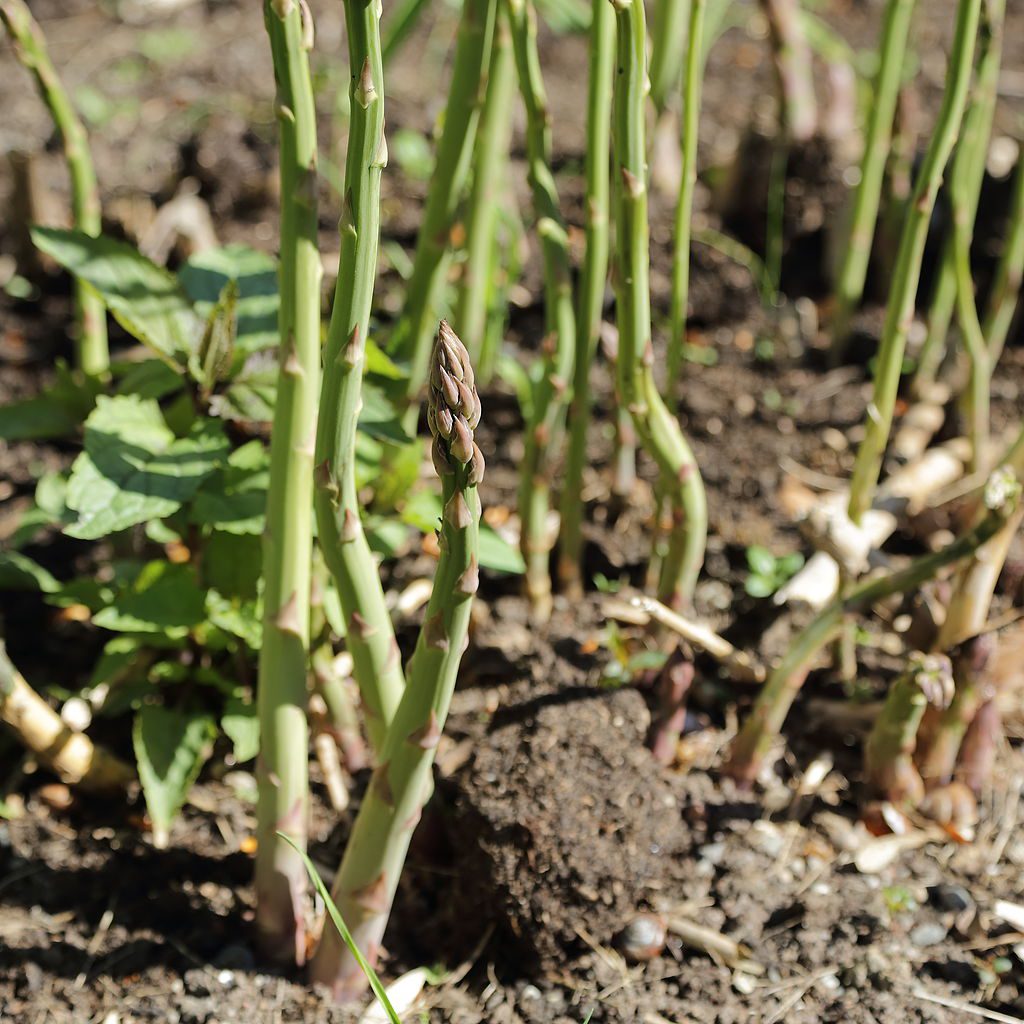Get The Most Out of Your Asparagus from Backyard Eats
Harvesting Asparagus
When It’s Ready
- Observe the spear size: Harvest asparagus spears when they reach 6 to 8 inches in length.
- Check the tips: The spear tips should be tightly closed and firm.
- Inspect the stalks: They should be smooth, straight, and have a vibrant green color.
- Harvest in the morning: Asparagus stalks are most crisp and tender during cooler parts of the day.
- Typically from April to June. Short harvest window of only 6-8 weeks.
When It’s Too Late
- Overgrown asparagus spears become woody and lose their tenderness.
- Regularly check your asparagus bed to avoid missing the optimal harvest time.
How To
- Use a sharp knife or garden shears to cut the spears at ground level.
- Hold the spear gently near the base and cut it at a slight angle.
- Avoid damaging nearby spears that are not ready for harvest.
- Collect the harvested asparagus in a basket or container.
About Asparagus
Asparagus is an herbaceous plant that can grow 2-4 ft tall. It requires full sun to thrive, but not trellising or pruning.
Flowering/Fruiting Tendencies
On a mature asparagus crown, young shoots come out of the ground in early spring.
Design Notes
Space asparagus plants 18″ apart in raised beds or perennial beds.
Care Notes
Prune back dead growth in late fall. Add compost and mulch in spring. After harvest window, let spears go to leaf and flower to keep the plant healthy.
Newly planted perennials require some additional care to help establish and support the plants as they grow. Water newly planted perennials deeply at the root 2-3 times a week during the first growing season. Apply compost and wood chip mulch in the late winter/early spring.
Storing Asparagus
Fresh Storage: Trim the ends of the stalks and place them upright in a container with about an inch of water in the bottom. Cover the tops of the asparagus with a plastic bag, and keep them in the refrigerator for up to five days.
Long-Term Storage: Blanch the asparagus by boiling it briefly, then plunge it into ice water. Drain and dry, then store in a freezer-safe container for up to eight months.

Cooking With Asparagus
- Roasted Asparagus: Toss trimmed asparagus spears with olive oil, salt, and pepper, then roast them in the oven until they become tender and slightly crispy. Roasting brings out the natural sweetness of asparagus and adds a delightful caramelized flavor.
- Grilled Asparagus: Brush asparagus spears with olive oil and sprinkle them with salt and pepper. Grill the asparagus over medium-high heat until they develop grill marks and become tender. Grilled asparagus makes a delicious side dish or addition to salads and pasta dishes.
- Asparagus Risotto: Add blanched and chopped asparagus to a creamy risotto during the last few minutes of cooking. The tender asparagus adds a fresh and vibrant element to the rich and comforting risotto.
- Asparagus Soup: Purée blanched asparagus with vegetable or chicken broth, onions, garlic, and a touch of cream for a creamy and flavorful asparagus soup. Season with herbs and spices to taste and serve hot or chilled.
- Asparagus Salad: Blanch asparagus until crisp-tender, then combine it with mixed greens, cherry tomatoes, sliced red onions, and a light vinaigrette dressing. This refreshing salad highlights the natural flavors and textures of asparagus.
- Asparagus Stir-Fry: Sauté asparagus spears with other vegetables like bell peppers, mushrooms, and carrots. Add soy sauce, ginger, garlic, and a pinch of red pepper flakes for a quick and flavorful stir-fry.




